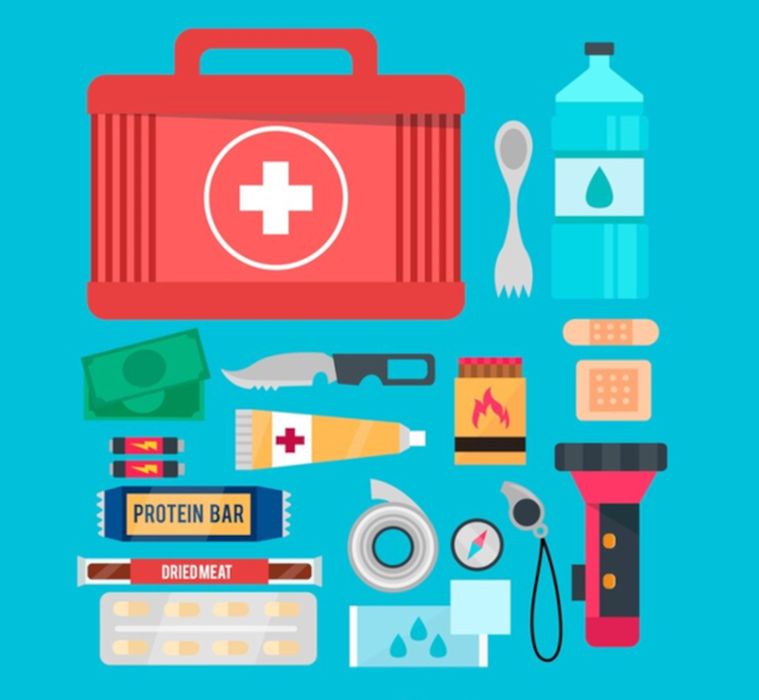
Charles R. Goulding and Preeti Sulibhavi discuss some of the important emergency and survival items that can be 3D printed and prepared before disaster strikes.
As a result of wars, conflicts and increased instances of natural disasters such as hurricanes, tornados and wildfires, many people find themselves unprepared for living. On October 19, 2023, the Wall Street Journal (WSJ) published an article featuring “disaster preparedness.”
Even if just for peace of mind, gathering a few items and setting them aside for a natural disaster is useful and can really be a big help if one should find oneself in such a climatic event.
Companies that specialize in disaster preparedness, such as Preppi, are seeing increased demand for their business. In fact, Preppi reports sales up 29% from last year. Given the state of global affairs, this is not surprising.
It may not be a climatic disaster that requires a survival kit; it may be one of the two wars raging in the world today (Ukraine and Israel). Many victims are innocent civilians and disaster kits are vital to their survival.
Here is a list of a few items we recommend keeping for survival and safety, many of which can be 3D printed:
1. Tents, sleeping bags and backpacks
Shelter from the elements is one of the first things that comes to mind. We have covered the use of 3D printing in the textile industry on Fabbaloo before. The textile and fabric industry is becoming more-and-more technology driven and has been increasingly utilizing equipment such as 3D printers to make products like tents.
2. Gardening supplies and seeds
If one finds themselves in the thick of a natural disaster, they will need food to survive as well. Many survival kits come with gardening supplies, including seeds. We have covered vertical farming, particularly in urban areas, and we see this trend “growing,” and being utilized in instances of disasters.
3. Mini water filtration systems
No matter who you are or where you live, everyone needs water. During a natural disaster clean water can be hard to come by. Water filtration becomes critical. Disaster kits often come with mini water filtration systems.
4. Portable stoves
Among the elements exists fire. To stay warm and/or cook food portable stoves become vital. That is why many kits come with small, portable stoves to allow survivors to cook and keep warm in instances that require heat and fire. We have covered how 3D printing is used for kitchen appliances in multiple articles on Fabbaloo this year.
5. Solar power banks and solar-powered equipment
Solar-powered panel banks are increasingly being included in survival kits. They can power radio and flashlight equipment at the same time while only needing the sun to stay powered. Some come with four to five panel banks to increase the longevity of power to charge such items.
6. Rechargeable battery generator, LED light display and dual USB mobile phone charger
In the instance of a disaster, communication is also necessary. But your phone must be charged in order to do so. Many survival kits come with dual USB mobile phone charges that function as rechargeable battery generators as well. Many come with LED lighting for visibility as well.
7. Shovels and multi-tool kits
In the event of a disaster, things get broken and may need fixing. Tools become a key element for survival. Whether it is a shovel to dig your way out of rubble or a multi-tool kit for smaller repairs, there is a need for tools for repairs in any disaster situation.
8. Personal protective equipment (PPE)
There may arise medical emergencies in a disaster situation. We have covered PPE on Fabbaloo, especially as it relates to Covid 19. But PPE would be useful in any medical emergency where injuries are sustained.
The Research & Development Tax Credit
The now permanent Research and Development (R&D) Tax Credit is available for companies developing new or improved products, processes and/or software.
3D printing can help boost a company’s R&D Tax Credits. Wages for technical employees creating, testing and revising 3D printed prototypes can be included as a percentage of eligible time spent for the R&D Tax Credit. Similarly, when used as a method of improving a process, time spent integrating 3D printing hardware and software counts as an eligible activity. Lastly, when used for modeling and preproduction, the costs of filaments consumed during the development process may also be recovered.
Whether it is used for creating and testing prototypes or for final production, 3D printing is a great indicator that R&D Credit eligible activities are taking place. Companies implementing this technology at any point should consider taking advantage of R&D Tax Credits.
Conclusion
Survival and disaster kits are not a new concept. But technology has leapfrogged in recent years, which means better preparedness during a natural disaster. Many necessary and useful items can be conveniently 3D printed.
